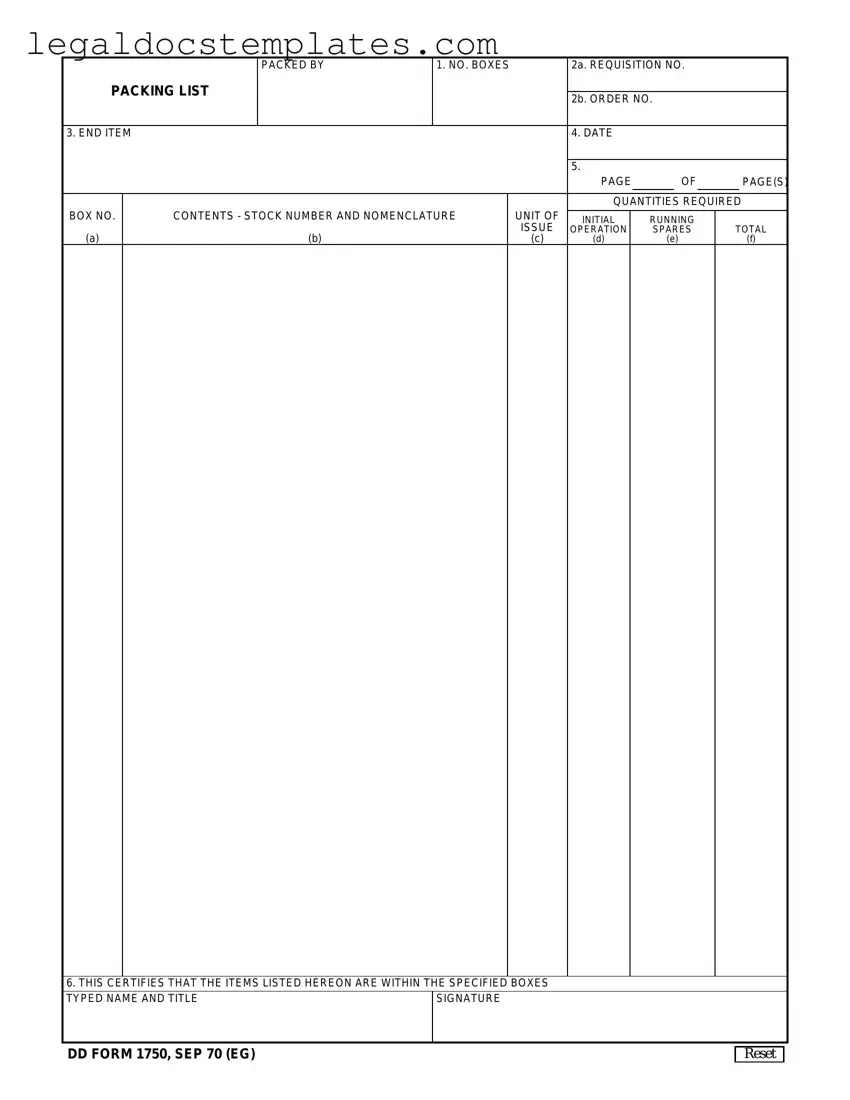Filling out the DD Form 1750, or the Packing List Form, is a crucial step in documenting the details of shipment and ensuring accountability for military and defense-related equipment. Mistakes made during this process can result in confusion, misplaced items, or even compromised operations. Here, we're highlighting four common mistakes individuals often make on the DD Form 1750, aiming to help prevent these errors in future fill-outs.
One frequent error involves the miscounting of boxes under ITEM 1. This entry requires the accurate number of boxes within a set to ensure every piece of equipment is accounted for. When individuals inaccurately report the number of boxes, it can lead to misplacement or loss of critical equipment. This mistake not only hampers inventory tracking but also could result in insufficient supplies reaching their intended destination.
Another common mistake is the incorrect filling out of ITEM 2a. & b., which involves the requisition and order numbers. These identifiers are crucial for tracking the shipment and referencing in any correspondence related to the cargo. Inaccuracies or omissions here can lead to delays in processing and difficulty in tracing the shipment back to its source or intended destination, complicating supply chain logistics.
Incorrectly listing the contents of each box under ITEM 5 is also a significant error often seen on the DD Form 1750. This section requires a detailed inventory of the box's contents, including the stock number and nomenclature. Failure to provide accurate or comprehensive lists can cause confusion during unpacking, hinder the process of inventory checks, and potentially disrupt the operational readiness of the receiving unit. Such inaccuracies may necessitate additional time and resources to rectify and reconcile the shipment with its documentation.
Lastly, the oversight in obtaining a proper certification under ITEM 6, which is where the packer certifies that the items listed are within the specified boxes, is a critical error. This certification, necessitating a typed name, title, and signature, acts as a form of accountability and traceability for the shipment. Skipping this step or inaccurately completing it diminishes the reliability of the documentation, potentially questioning the integrity of the entire shipment.
Understanding and avoiding these common mistakes can significantly enhance the efficiency and reliability of military logistics operations. Accurate completion of the DD Form 1750 ensures that equipment and supplies reach their intended destinations ready for use, supporting the operational readiness and effectiveness of military units.


